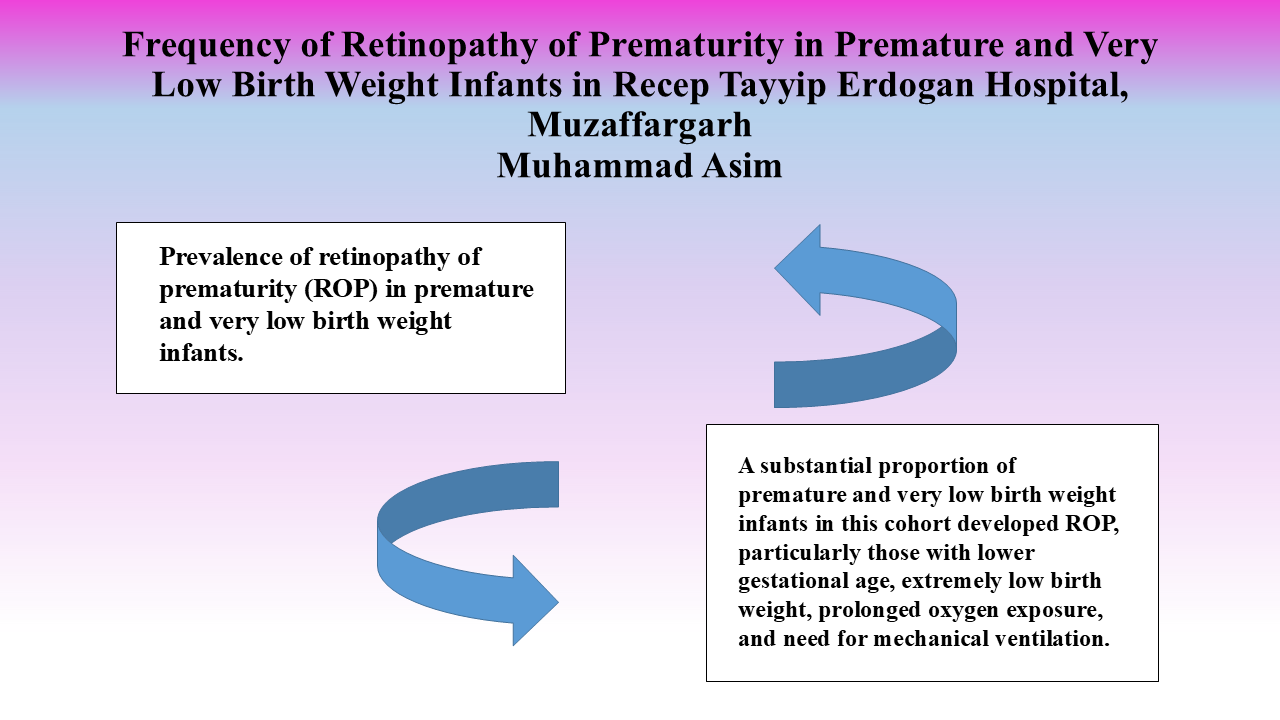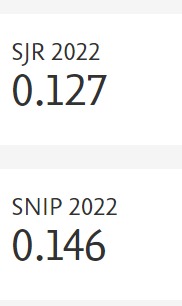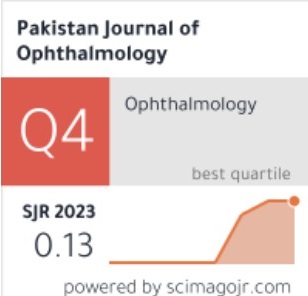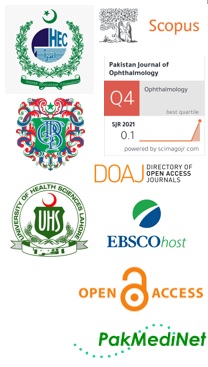Frequency of Retinopathy of Prematurity in Premature and Very Low Birth Weight Infants
Doi: 10.36351/pjo.v41i4.2116
DOI:
https://doi.org/10.36351/pjo.v41i4.2116Abstract
Purpose: To determine the prevalence of retinopathy of prematurity (ROP) in premature and very low birth weight infants.
Study Design: Descriptive Observational study.
Place and Duration of Study: Department of Pediatric Medicine at Recep Tayyip Erdogan Hospital, Muzaffargarh, from 26th November 2024 to 25th May 2025.
Methods: A total of 172 infants born at ≤ 32-weeks of gestation and weighing ≤ 1500 grams birth weight were consecutively included in the study.Data regarding age, gender, gestational age, birth weight, duration of oxygen therapy, need for surfactants and mechanical ventilation was collected. Fortnightly eye examinations were performed by ophthalmologist. Factors associated with ROP were determined through chi-square test at 5% significance level using SPSS version 27.
Results: Of all the participants, 52.3% (n=90) were males. The mean gestational age and birth weight were 29.3 ± 1.4 weeks and 1123.4 ± 131.6 grams. The surfactant therapy was required in 61% (n=105) and mechanical ventilation in 56.4% (n=97). The mean duration of oxygen therapy was 9.6 ± 5.0 days. Retinopathy of prematurity was diagnosed in 30.2% (n=52) of infants.Frequency of ROP was significantly high in infants with gestational age of < 30-weeks (40%), birth weight of ≤ 1000 grams (59.6%), infants receiving mechanical ventilation (48.5%) and oxygen therapy for > 10-days (71%).
Conclusion: Significant proportion of infants developed ROP. Lower gestational age and birth weight with need for mechanical ventilation and prolonged oxygen therapy aresignificantly associated with ROP.

Downloads
Published
How to Cite
Issue
Section
License
Copyright (c) 2025 Muhammad Asim, Masood Mazhar Sahu, Sana Asghar, Nawaal Abbas, Arsalan Shabeer

This work is licensed under a Creative Commons Attribution-NonCommercial 4.0 International License.






